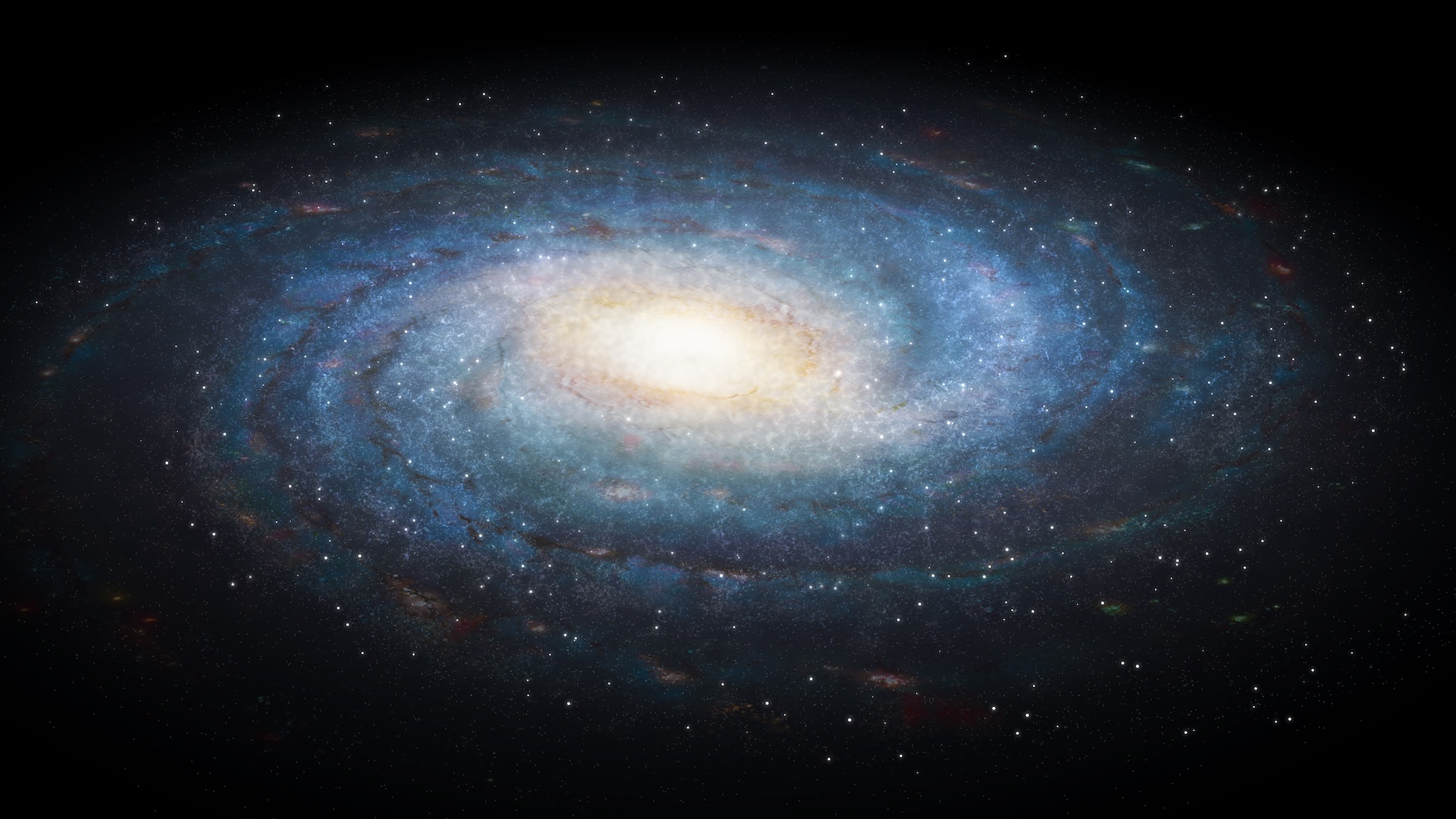How many galaxies orbit the Milky Way?
The number of known galaxies circling the Milky Way is increasing as we develop new powerful telescopes.

In space, the gravitational pull of massive objects is irresistible to smaller ones. Moons are locked in orbit around planets. Planets, asteroids and comets orbit more massive stars, and stars collect around supermassive black holes, forming galaxies.
Large galaxies, like the Milky Way, attract smaller galaxies. Our solar system's cosmic neighborhood spans 100,000 light-years and contains between 100 billion and 400 billion stars. The Milky Way is so big that, over billions of years, its mass has captured numerous dwarf galaxies, which contain no more than a few billion stars, as satellites.
But how many satellite galaxies does the Milky Way have?
The count is continually changing as new telescopes and sky surveys reveal ever-fainter galaxies. But let's start with the ones we can see easily. Two of Milky Way's prominent satellite galaxies are the Large Magellanic Cloud and the Small Magellanic Cloud. They orbit the Milky Way at a distance of about 160,000 light-years and are visible from the Southern Hemisphere without a telescope, according to NASA's Goddard Space Flight Center.
However, such highly visible satellites are the exception, not the rule. Most satellite galaxies are so small and dim that they are invisible to all but the most powerful telescopes. Scientists find dwarf galaxies by using instruments with a wide field of view to capture as much of the sky as possible, said Or Graur, an associate professor of astrophysics at the University of Portsmouth in the U.K.
"The bigger telescopes get and the better our instruments get, we can drill down to fainter and fainter dwarf galaxies, down to what is now called ultra-faint dwarfs," which have just a few hundred thousand stars, Graur told Live Science.
Related: How many galaxies are in the universe?
Get the world’s most fascinating discoveries delivered straight to your inbox.
Confirming if a nearby dwarf galaxy is a Milky Way satellite involves spectroscopy — analysis of the light it emits — to determine its motion and direction, said Marla Geha, a professor of astronomy and physics at Yale University.
"Then you can tell whether the object is gravitationally bound to itself, and if that ensemble is going around the Milky Way," Geha told Live Science. "A satellite galaxy is currently — and will always go around — the larger galaxy."
A recent census, published in 2020 in The Astrophysical Journal, estimated that there were about 60 satellites orbiting the Milky Way within a distance of 1.4 million light-years. Yet the precise number of the Milky Way's satellite galaxies is tricky to pin down, in part because not all of the proposed satellite galaxies have been spectroscopically confirmed to be orbiting the Milky Way.
"There are probably five to eight objects that don't yet have spectroscopy or have ambiguous spectroscopy," Geha said. What's more, new satellite candidates are still being discovered, she added.
Geha studies the origin and evolution of dwarf galaxies, and when she started her research more than two decades ago, the Milky Way had only 11 known satellites. That changed when the Sloan Digital Sky Survey began collecting data in the early 2000s, Geha said. Sloan produced the first digital map covering more than one-third of the night sky, and its digital camera improved astronomers' chances of spotting dim dwarf galaxies. Their faint luminescence is often obscured by brighter stars that are closer to Earth.
Using Sloan's digital images, researchers could algorithmically subtract foreground stars — something that was much harder to do with analog photographs and photographic plates, Geha said. This revealed faint dwarf galaxies that were previously hidden.
"Each of the big new imaging surveys has been a game-changer," Geha said. "Technology is really driving all of these upticks and the number of satellites that we know about."
From Sloan in the 2000s to the Dark Energy Survey in the 2010s, each survey revealed dozens more satellite galaxies orbiting the Milky Way. The Vera C. Rubin Observatory in Chile will likely find hundreds more satellites, Geha said — that is, if the Milky Way doesn't eat those galaxies first.
"Satellite galaxies are gravitationally bound to the Milky Way," Graur said. "The Milky Way keeps pulling on them gravitationally. Slowly, it pulls them in. And as it pulls them in, it starts to tear them apart and consume them."
One such victim was a dwarf galaxy now known as Gaia Enceladus, which was shredded and devoured by the Milky Way and whose stars now glimmer in the Milky Way's halo, Graur said. Eventually, the satellite galaxies that are visible today will likely suffer the same fate, Geha added.
"If we waited a super long time, billions and billions of years," she said, "those satellite galaxies will fall into the parent and merge, and create an even bigger central galaxy."

Mindy Weisberger is a science journalist and author of "Rise of the Zombie Bugs: The Surprising Science of Parasitic Mind-Control" (Hopkins Press). She formerly edited for Scholastic and was a channel editor and senior writer for Live Science. She has reported on general science, covering climate change, paleontology, biology and space. Mindy studied film at Columbia University; prior to LS, she produced, wrote and directed media for the American Museum of Natural History in NYC. Her videos about dinosaurs, astrophysics, biodiversity and evolution appear in museums and science centers worldwide, earning awards such as the CINE Golden Eagle and the Communicator Award of Excellence. Her writing has also appeared in Scientific American, The Washington Post, How It Works Magazine and CNN.



